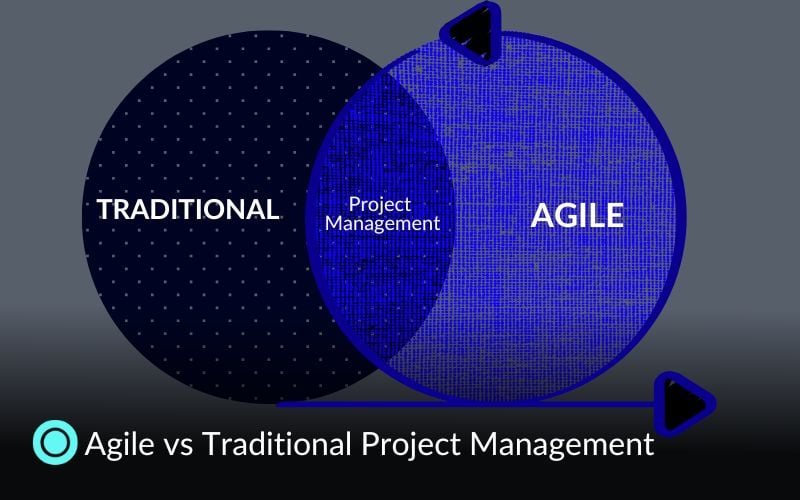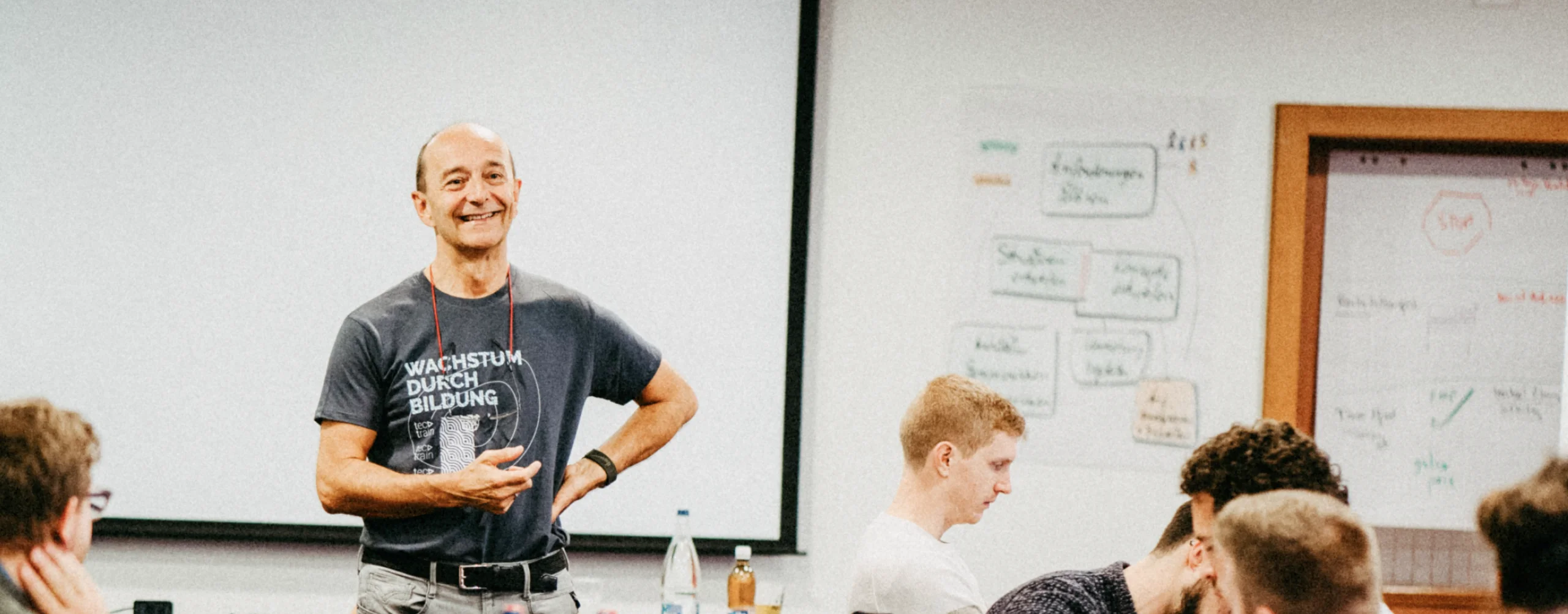Key Takeaways
What is the difference between traditional and agile project management?
It’s one of the most common questions teams ask, and the answer is not as simple as choosing one method over the other.
Traditional project management works best when everything can be planned in advance. Agile shines when change is expected and feedback drives progress.
In this article you’ll get a simple breakdown of both approaches, from Waterfall to Scrum, see how they compare with real success data, and learn how to decide which path makes the most sense for your project.
What is Project Management?
Project management takes an idea and turns it into a real result. You plan the work, organize people and tools, and guide tasks so goals are met on time and within budget. In short, you use the right skills, tools, and methods to move a project from start to finish.
Every project is unique. You might launch a new service, build software, or improve an internal process. They share a few traits. They are temporary, they set a clear goal, and they need people and resources working together to succeed.
Teams choose how they work, traditional or agile. Some projects need fixed steps and tight control. Others need flexibility and fast feedback. Good project management gives structure, keeps work organized, lowers risk, and helps you deliver real value.
What is Classic Project Management?
Classic or traditional project management follows a step-by-step approach. Everything is planned in advance, from scope to budget, and each phase must be completed before the next begins. The most common model here is the Waterfall method. In this setup, teams move through fixed stages like analysis, design, development, and testing, with strict documentation and approvals at every step.
This approach works best when requirements are clear and unlikely to change. It offers structure, discipline, and predictability. But it also comes with trade-offs.
Pros
-
Clear structure and responsibilities
-
Strong control through documentation and sign-offs
-
Predictable costs and timelines when requirements are stable
Cons
-
Limited flexibility, changes are slow and costly
-
Customer input is minimal after the initial phase
-
Errors are often found late, during testing, when they are harder to fix
-
Heavy documentation takes time and reduces creativity
-
Delays in one phase hold back the entire project
In short, traditional project management is suited for stable projects where everything can be planned from the start. But in fast-moving environments, its rigidity can become a barrier.
Traditional Waterfall Project Management
The waterfall moves in one direction, step by step. You finish a phase before the next one starts. The usual flow is Analysis, then Design, Implementation, Testing, Deployment, and Maintenance.
This makes the project easy to follow, but also pretty strict. If something changes late in the process, fixing it takes a lot of time and money. Customers usually don’t get much say once the project has started, and many problems are only spotted at the very end.
Waterfall works best when everything is clear from the beginning. But if things are likely to change along the way, this method can become a real struggle.
What is Agile Project Management?
Agile project management is all about flexibility. Instead of following one big plan from start to finish, work is done in short cycles, often called sprints. After each cycle, the team shows real progress, gets feedback, and adjusts the next steps if needed. This way, change is not a problem but part of the process.
Studies highlight what really makes agile work: good communication, motivated teams, and close involvement of customers. New tools like AI and data insights can also support teams by speeding up decisions and helping them react to change more effectively
Pros
-
Adapts quickly when things change
-
Delivers usable results early and often
-
Keeps customers involved throughout
-
Boosts team motivation and ownership
Cons
-
Needs skilled, self-organized teams
-
Can be tricky to manage in very large or highly regulated projects
-
Costs and timelines are less predictable than with fixed plans
Agile is a strong fit for projects where learning along the way is just as important as the final result.
Featured Resource:
Business Agility: What is it & Why is it important?
Agile Project Management with Scrum
Scrum is a popular agile way of working. Instead of one long plan, you split work into short sprints of two to four weeks. Each sprint ends with a usable result, fresh feedback, and updates for the next sprint.
The setup is clear. The Product Owner speaks for the customer and sets priorities. The Scrum Master keeps agile rules in place and removes blockers. The team plans and delivers the work.
Scrum gains strength from a steady rhythm. Daily check-ins keep everyone aligned. Sprint reviews bring customer feedback into the room. Retrospectives help the team improve step by step. The system stays lightweight, and teams move faster, stay focused, and handle change with less stress.
Featured Resource:
Agile Software Development: Methods, Benefits, Implementation
Difference Between Traditional Project Management and Agile
Traditional and agile project management aim for the same thing: finishing projects successfully, but they go about it in very different ways. Traditional methods like Waterfall follow a straight line: plan everything up front, then move step by step until the end. Agile takes the opposite approach. It works in short cycles, delivers results early, and uses feedback to adjust along the way.
A recent study (Success with Agile Project Management: Looking Back and into the Future, 2025) shows that agile works well because it focuses on people and adaptability. Strong communication, motivated teams, and customer involvement are major drivers of success. New tools such as AI and data-driven insights are also helping teams make smarter choices and stay flexible when things change.
In other words, agile makes it easier to handle uncertainty, while traditional methods are better when everything can be defined from the start.
How is Agile Different from Traditional Project Management
In software projects, the numbers tell a clear story. Agile projects succeed more often than traditional ones. The Standish Group’s Chaos Report 2021 found that agile projects are about twice as likely to succeed and less than half as likely to fail compared to projects run with the Waterfall model.
This does not mean traditional methods have no use. They still work well when everything can be planned from the start. But when change is constant and feedback is important, agile fits better. Teams can learn from each step, adjust quickly, and stay close to customer needs. Problems are usually spotted and fixed early instead of waiting until the final testing stage.
Put simply:
-
Traditional management spends a lot of time planning first and hopes the plan does not change.
-
Agile plans as it moves, adapting naturally when things shift.
How to choose? Traditional versus Agile Project Management
There is no single rule for the “right” method. Your choice depends on the work and your priorities. Ask yourself:
-
Do we know exactly what we want to build, or will needs change along the way?
-
Is detailed documentation required, or is fast customer feedback more valuable?
-
Does the team prefer clear step by step plans, or do they feel comfortable organizing their own work?
-
Is a fixed budget and timeline most important, or do we need flexibility and innovation?
If your answers lean toward stability and control, traditional project management fits well. If they point to change, learning, and fast delivery, agile will likely suit you better.
Many teams mix both. They plan the big picture with traditional methods. They deliver in short agile cycles to learn and adjust. The smart move is a balance that fits your situation.
Summary
Agile project management and classic project management each have their advantages and disadvantages. While classic project management is particularly suitable when the requirements are clearly defined and a fixed schedule has to be adhered to, agile project management offers advantages when it comes to reacting flexibly to changes and finding innovative solutions.
If you want to learn more about agile project management and the different agile methods, we recommend our "Scaled Agile Framework" page. Discover a range of SAFe training options here, including our course on "SAFe Agile Software Engineering." This particular course provides you with foundational knowledge in agile software development.
If you are also interested in classic project management, we also offer a variety of training courses and certifications on this topic on our "Academy" page.





